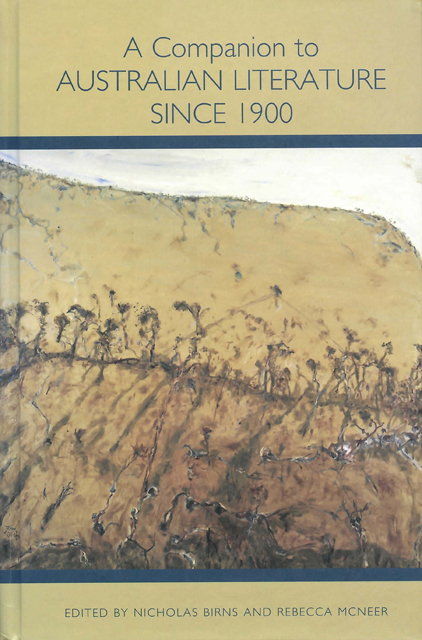Book contents
- Frontmatter
- Dedication
- Contents
- Chronology of Main Events in Australian History, 1901–2005
- Acknowledgments
- Note on the Cover Illustration and Artist
- Introduction
- Part 1 Identities
- Part 2 Writing Across Time
- Part 3 International Reputations
- Part 4 Writers and Regions
- Part 5 Beyond the Canon
- Notes on the Contributors
- Index
22 - Xavier Herbert
Published online by Cambridge University Press: 10 March 2023
- Frontmatter
- Dedication
- Contents
- Chronology of Main Events in Australian History, 1901–2005
- Acknowledgments
- Note on the Cover Illustration and Artist
- Introduction
- Part 1 Identities
- Part 2 Writing Across Time
- Part 3 International Reputations
- Part 4 Writers and Regions
- Part 5 Beyond the Canon
- Notes on the Contributors
- Index
Summary
Born in Western Australia, Xavier Herbert attended the Christian Brothers’ School in Fremantle and then studied pharmacy and medicine in Perth and Melbourne. Early on, however, he developed an intense desire to write. He wrote his first story at thirteen, one that won first prize in an Interstate State School competition; however, he did not publish his first story until he was twenty-five, under the penname Herbert Astor. From this initial publication, until his death in 1984, he published four novels, one short-story collection, Larger Than Life (1963), and one autobiography, Disturbing Element (1963). Among his four novels, the two most successful are Capricornia (1938), winner of the sesquicentenary novel competition and the Australian Literature Society’s medal in 1934, and Poor Fellow My Country (1975), winner of the Miles Franklin Award in 1975. His two previous novels, Seven Emus (1959) and Soldier’s Women (1961), did not attract as much critical attention. Indeed, until recently, much of the critical attention Herbert has received has largely ignored cultures other than white.
During his early life, Xavier Herbert worked at a pharmacist’s, and he became a pharmacist himself, but then took to writing, working at various jobs in the Government Medical Service and as Protector of the Aborigines in Darwin, as fettler and deep-sea diver, and in ships along the coast of the Northern Territory. At the age of thirty, he went to London, where he remained until 1932. According to Frances De Groen’s Xavier Herbert: A Biography, Herbert went to London “to establish his career as a novelist” (76). There he met his future wife, Sadie Norden, of Jewish parentage, who later figured large as Rifkah Rosen in his last novel, Poor Fellow My Country. All this and more becomes material for his fiction, which is, in various disguises, mostly autobiographical.
After writing an unsuccessful novel, Black Velvet (1930), which was rejected by a London publisher on the grounds that the characters were unredeemable, Herbert, still in London, wrote Capricornia. Massive editing was required to reduce the book from half a million words to half that length before publication.
- Type
- Chapter
- Information
- A Companion to Australian Literature since 1900 , pp. 335 - 344Publisher: Boydell & BrewerPrint publication year: 2010

